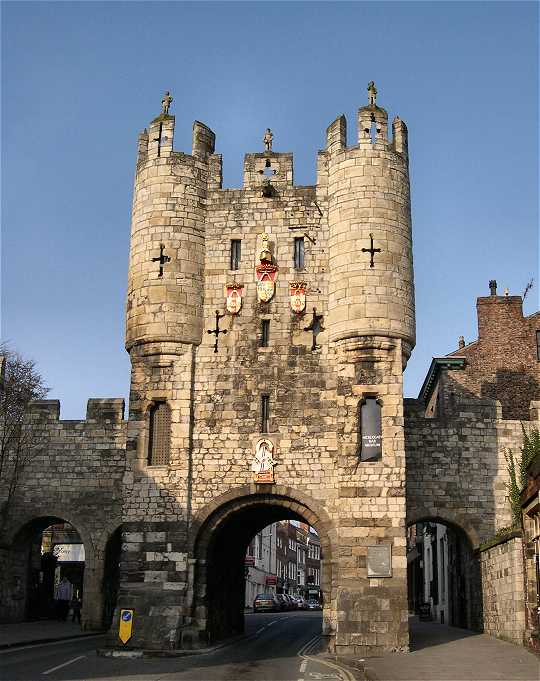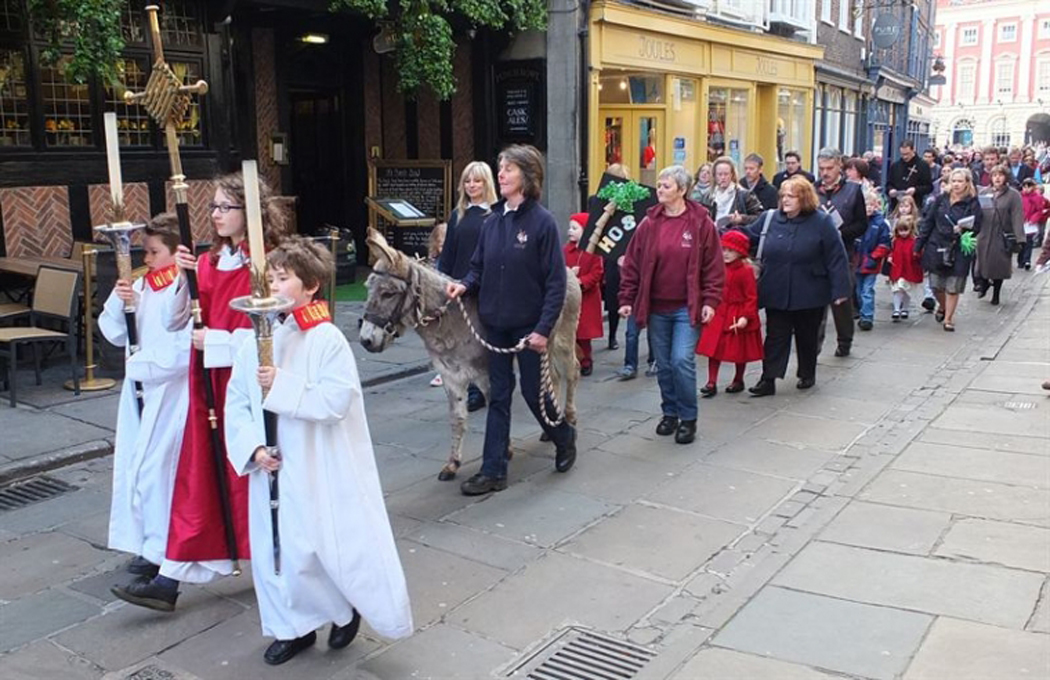When staging the Triumphal Entry into Jerusalem, Medieval York simply turned into Jerusalem in the eyes and minds of the audience and performers

In a late medieval context, Palm Sunday was considered a significant opportunity to invigorate the believers through the deft handling of a set of multisensory liturgies and artefacts.
Interdisciplinary studies of the evidence from chronicles, musical liturgies, processionals and church murals depicting the scenes from the York mystery plays offer the opportunity to experience Late medieval spirituality anew.
Especially poignant are the studies currently being conducted by Tamara Haddad in connection with her thesis on The York Corpus Christi Cycle and Site-Specific Performances. In her thesis, she examines the role which the choices of location played in connection with the actual performance throughout the Medieval City of York.
Tamara Haddad recently published an overview of that part of her work, which deals with the Entry into Jerusalem, performed by the Skinners. Even though the Mystery Plays were traditionally performed at the time of the festival of Corpus Christ, the research is pertinent to our general understanding of the Passion Plays’ role in the religious life in a late Medieval Context.
These plays were “wagon plays” which means that the stages for the plays were built on carts pulled around the city together with all the actors and props. The carts stopped at different places (called “stations”) where the actors performed their scene. Tamara Hadding is exploring the many ways in which the exact location of the “stations” was chosen in order to instil a specific sense of place in the audience.
“A site-specific performance relies on the relationship between memory and topography”, she writes, “exploring how the history of a locale can be conveyed to the audience through a dramatic act.
By looking at the medieval performances of the York Corpus Christi Play as site-specific, she is demonstrating how York’s topography and the daily uses of the sites along the pageant route enriched the audience’s reception of the play.
In particular, she explores the visual presence of Micklegate Bar as an aide-memoire through which Jerusalem is superimposed on York in a performance of the Skinners’ Entry into Jerusalem at the first playing station.
Other factors such as staging and the presence of weekly medieval markets are also considered, including how the presence of the city’s Common Clerk at the first stopping place mimics Zacheus’ role in the pageant.
In this way, the performance was enriched by the specificity of York’s topography while at the same time recalling the memories present in the stopping places”, she says.
In the eyes and in the mind of the audience and performers, the city of York simply ended up as the City of Jerusalem.
SOURCE:
Locating the Drama: Micklegate Bar and the Skinners’ Entry into Jerusalem
By Tamara Haddad
In: The Mediaeval Journal (2014) , Vol 4, No. 2
SEE ALSO:
Site-Specific Performance and the Fictive Localities of the York Corpus Christi Play
By Tamara Haddad, T
University of Kent 2019
EXTRACT:
The purpose of this thesis is to examine the York Corpus Christi Play as a site-specific text that relies on its placement in medieval York to create meaning for its audiences. The study examines the physical and social context of these pageants from the 1370s until the 1560s and uses human geography as the theoretical framework to situate the performances of the Play in their urban environment. Issues of site, place, staging, and the interaction that these elements have with the fictive localities presented in the pageants are central to this understanding of the Play as a site-specific text.
The study begins with an exploration of the topography and archaeology of medieval York with a focus on the pageant route as well as the places that were significant centres of meaning for its citizens. This is followed by an examination of the extant documentary evidence from the medieval performances and the mechanics of the productions in order to show how the practical details of staging are affected by the playing space. The three case studies at the close of the thesis show how different groups of pageants from the Play engage with its performance space to articulate the importance of site for the reception of the medieval performances. These case studies will show that the relationship between the fictive localities in the pageants and the architectural sites of the performances in York are an essential part of the audiences’ experience of the Play.
